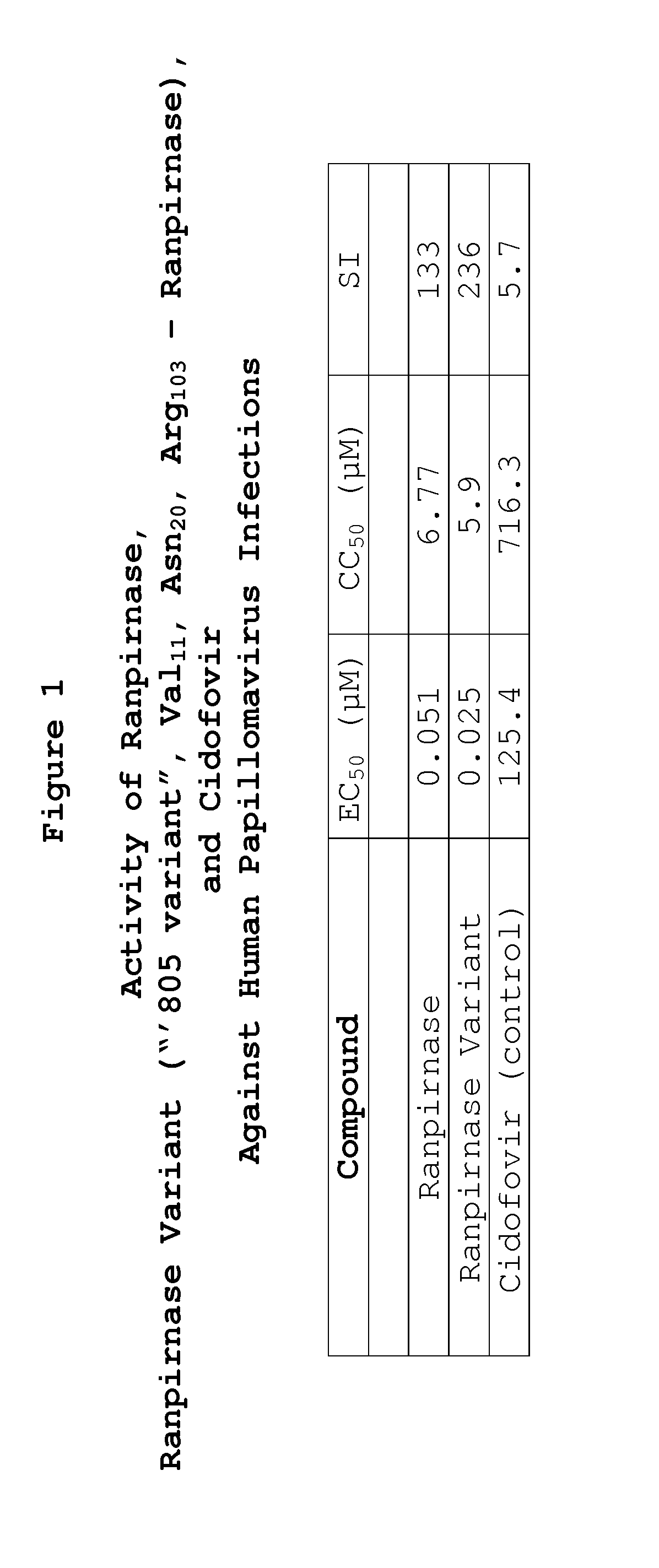Methods of treating human papillomavirus
a human papillomavirus and treatment method technology, applied in the field of virus infections, can solve the problems of ineffective existing treatment (cellular immune inducers and anti-mitotic agents), and no satisfactory treatment for hpv infections
- Summary
- Abstract
- Description
- Claims
- Application Information
AI Technical Summary
Benefits of technology
Problems solved by technology
Method used
Image
Examples
Embodiment Construction
[0011]To evaluate the activity of the tested RNases against type 11 HPV infections, the following quantitative PCR assay was used:
[0012]Solutions of the tested RNases were prepared in cell culture medium without use of dimethyl sulfoxide (“DMSO”). DMSO is unnecessary because the tested RNases are water-soluble.
[0013]HPV is an DNA virus. Antiviral activity against HPV type 11 was evaluated using a quantitative reverse transcriptase PCR (QRT-PCR) assay. Initially, on Day 1, 1 million A-431 cells were placed in 6-well dishes in Dulbecco's Modified Eagle Medium (“DMEM”) supplemented with 10% fetal bovine serum (“FBS”). The cells were then incubated for two days at 37° C.
[0014]After this incubation period, on day 2 replicate aliquots of HPV-11 were added to each non-control well, representing a multiplicity of infection (“MOI”) of 150 particles per cell in DMEM containing 2.5% FBS. Control wells did not receive HPV-11.
[0015]One day later, i.e. on day 3, DMEM with 10% FBS was added to eac...
PUM
| Property | Measurement | Unit |
|---|---|---|
| concentration | aaaaa | aaaaa |
| water-soluble | aaaaa | aaaaa |
Abstract
Description
Claims
Application Information
 Login to View More
Login to View More - R&D
- Intellectual Property
- Life Sciences
- Materials
- Tech Scout
- Unparalleled Data Quality
- Higher Quality Content
- 60% Fewer Hallucinations
Browse by: Latest US Patents, China's latest patents, Technical Efficacy Thesaurus, Application Domain, Technology Topic, Popular Technical Reports.
© 2025 PatSnap. All rights reserved.Legal|Privacy policy|Modern Slavery Act Transparency Statement|Sitemap|About US| Contact US: help@patsnap.com

